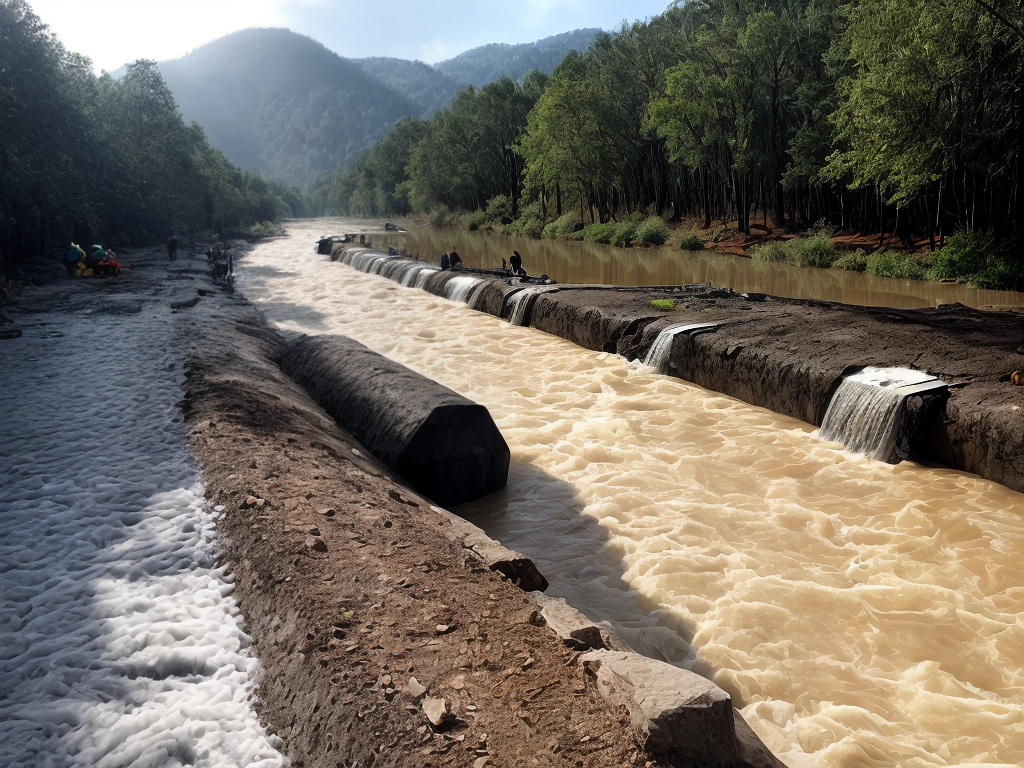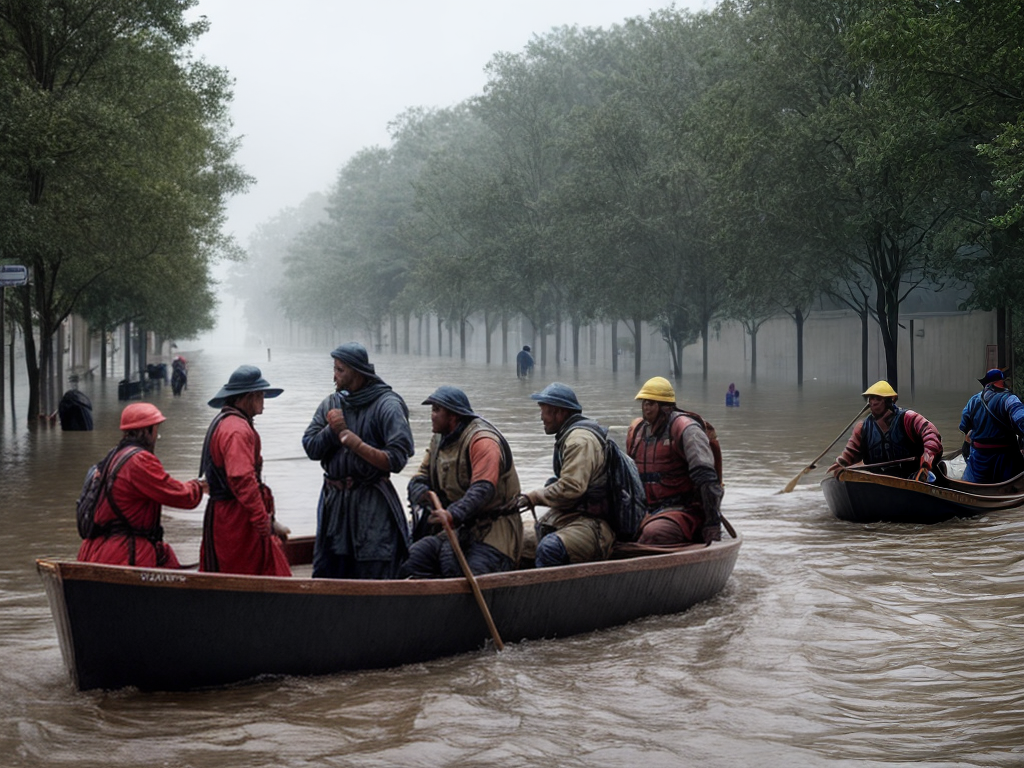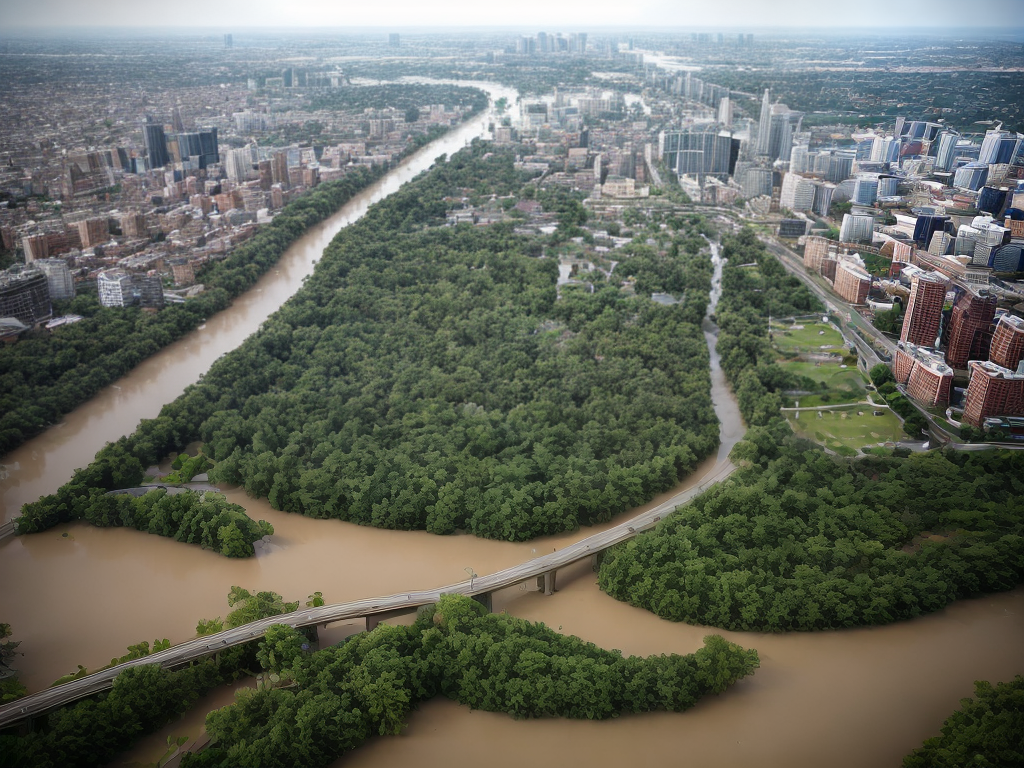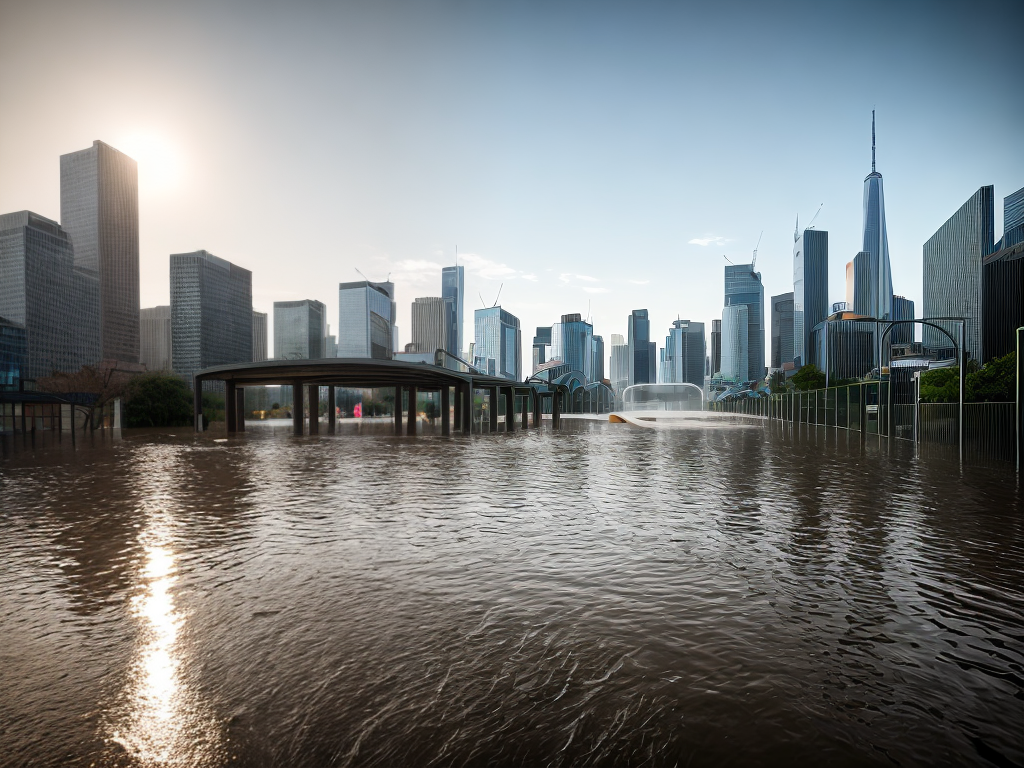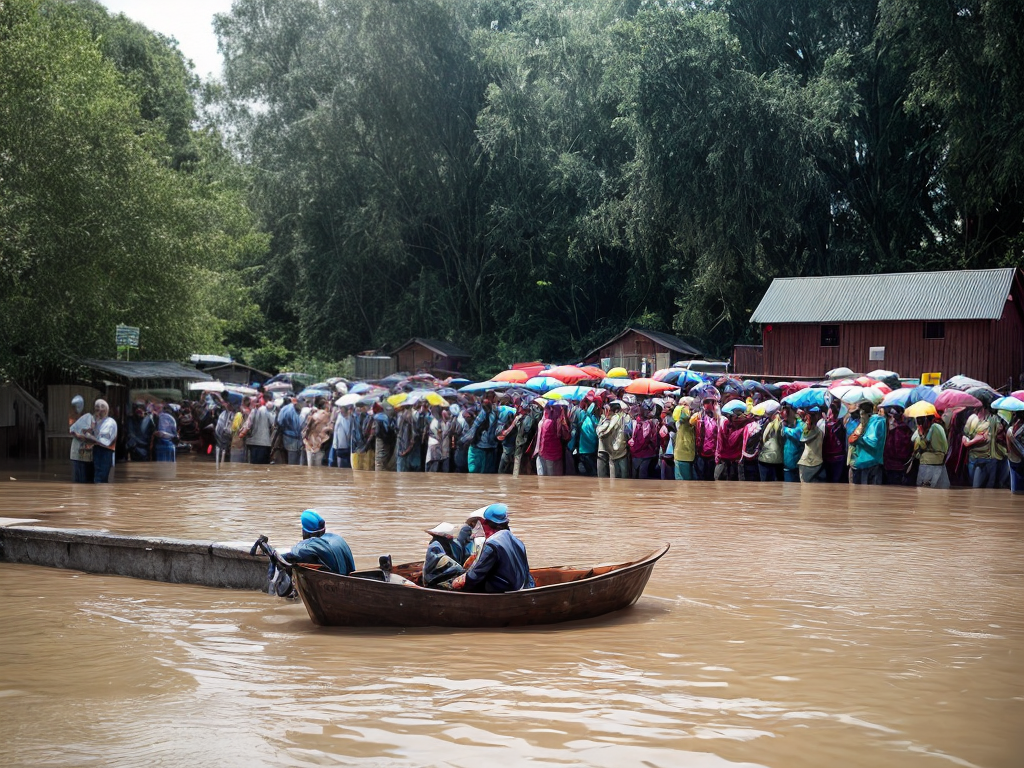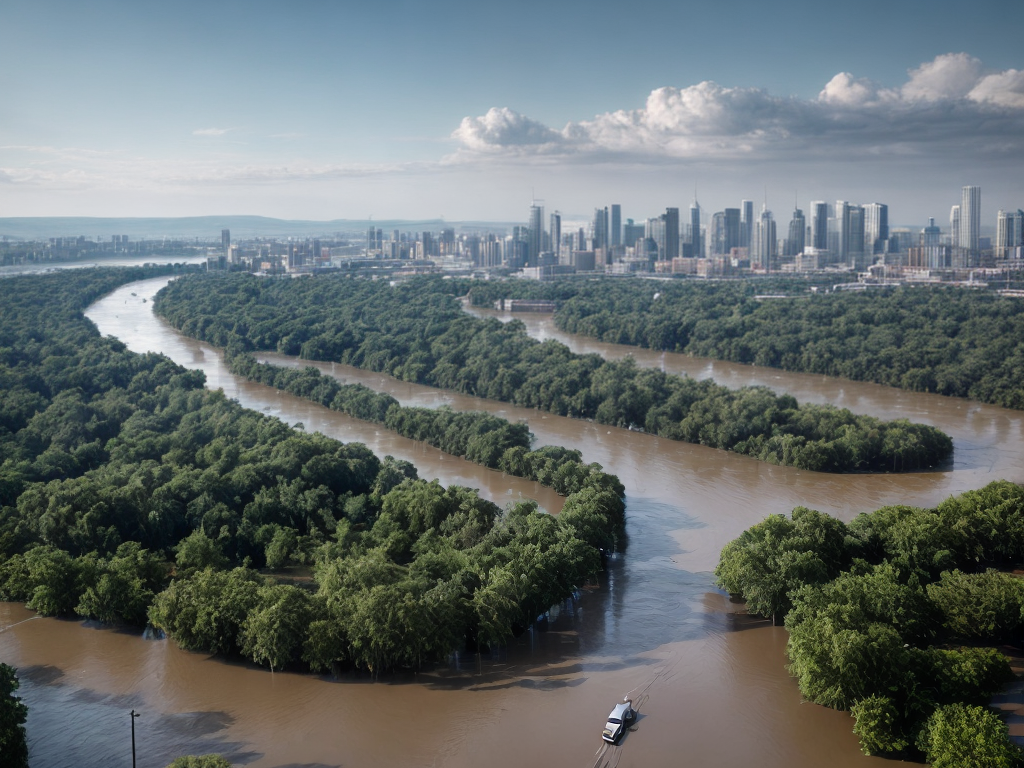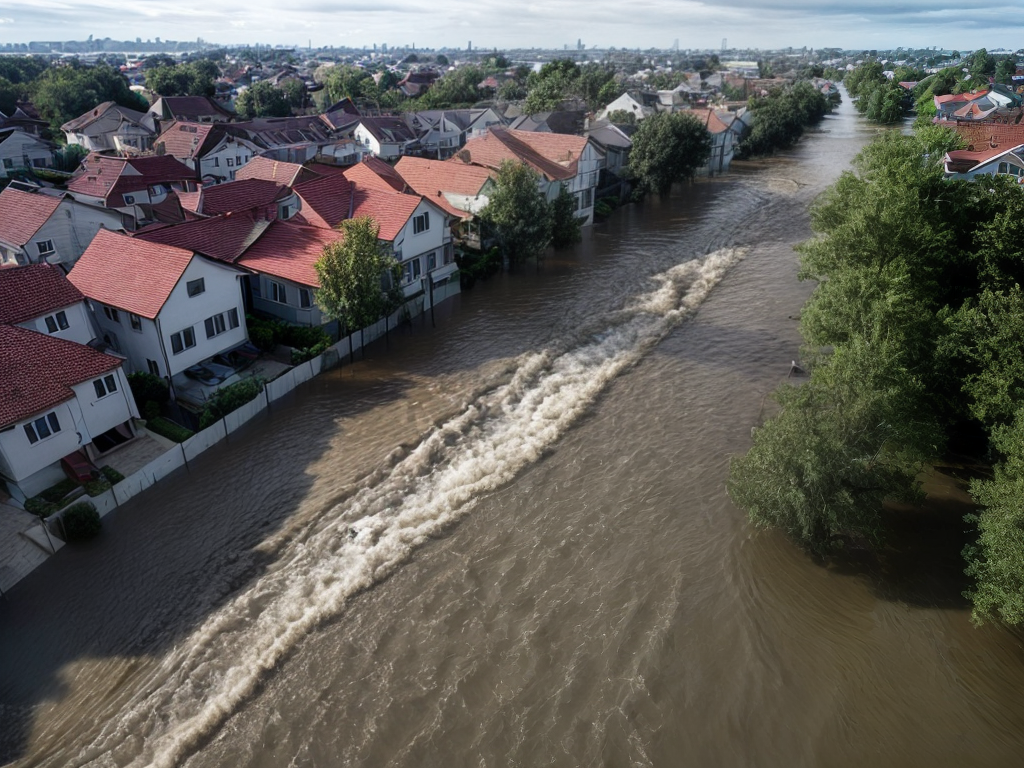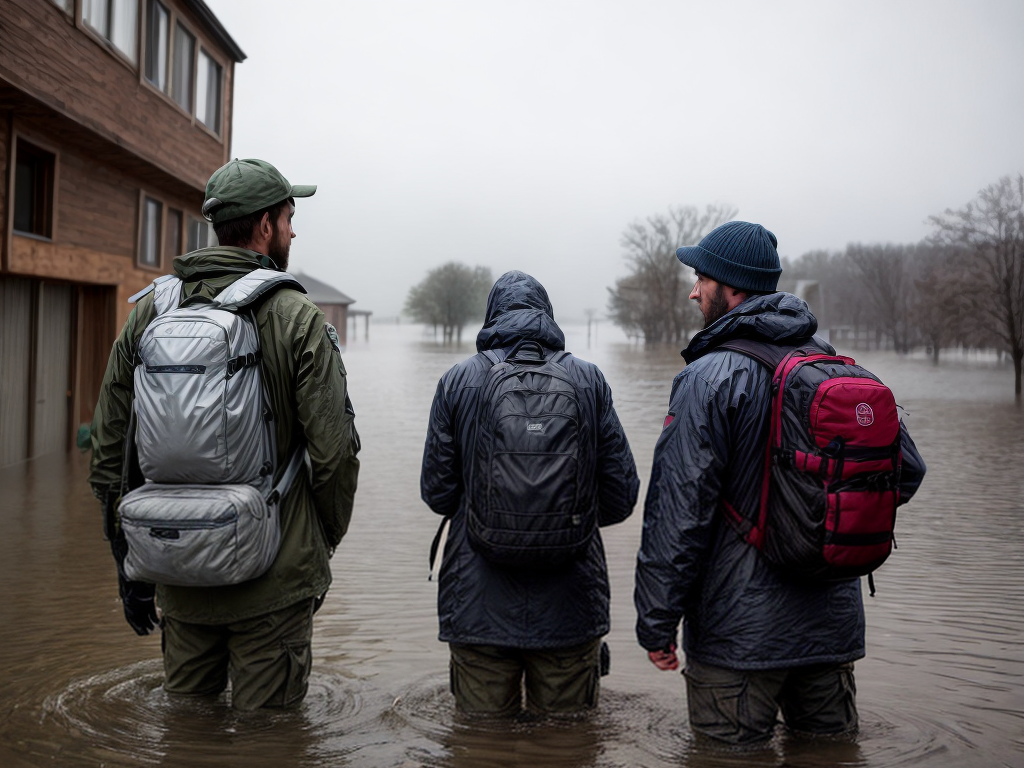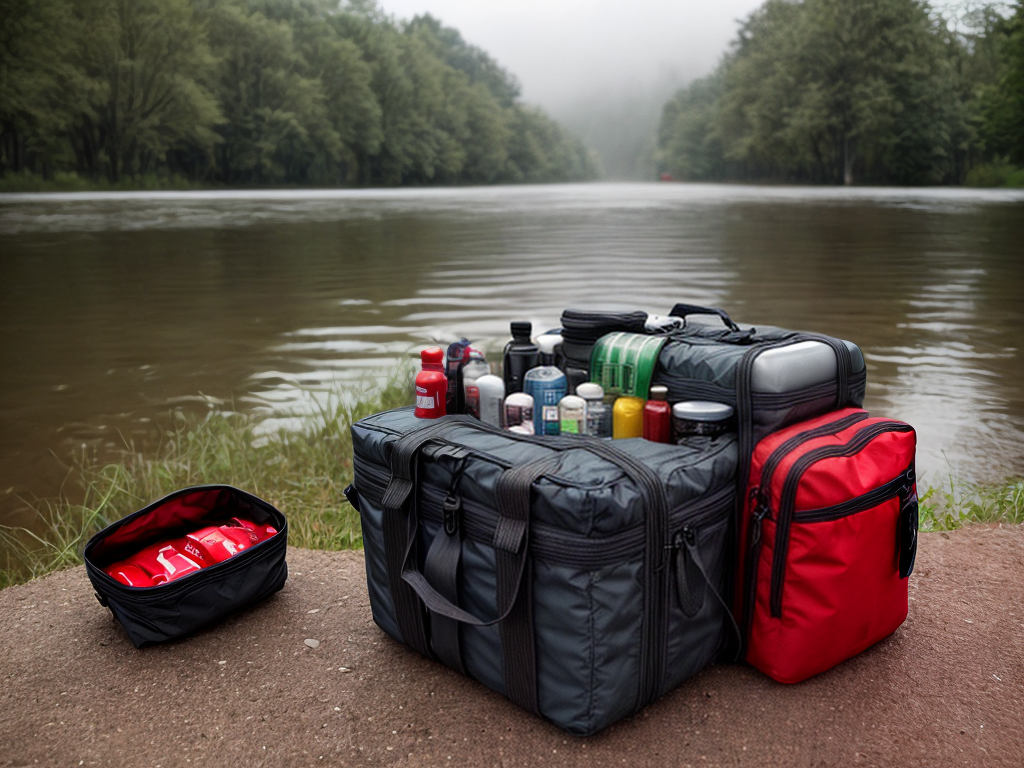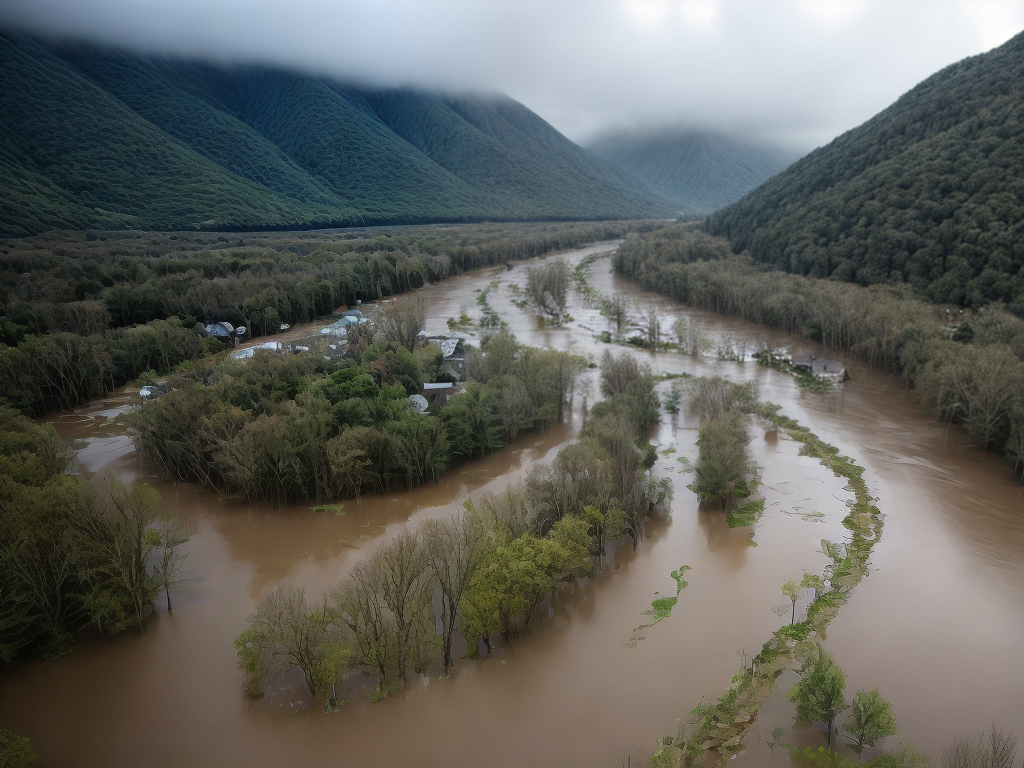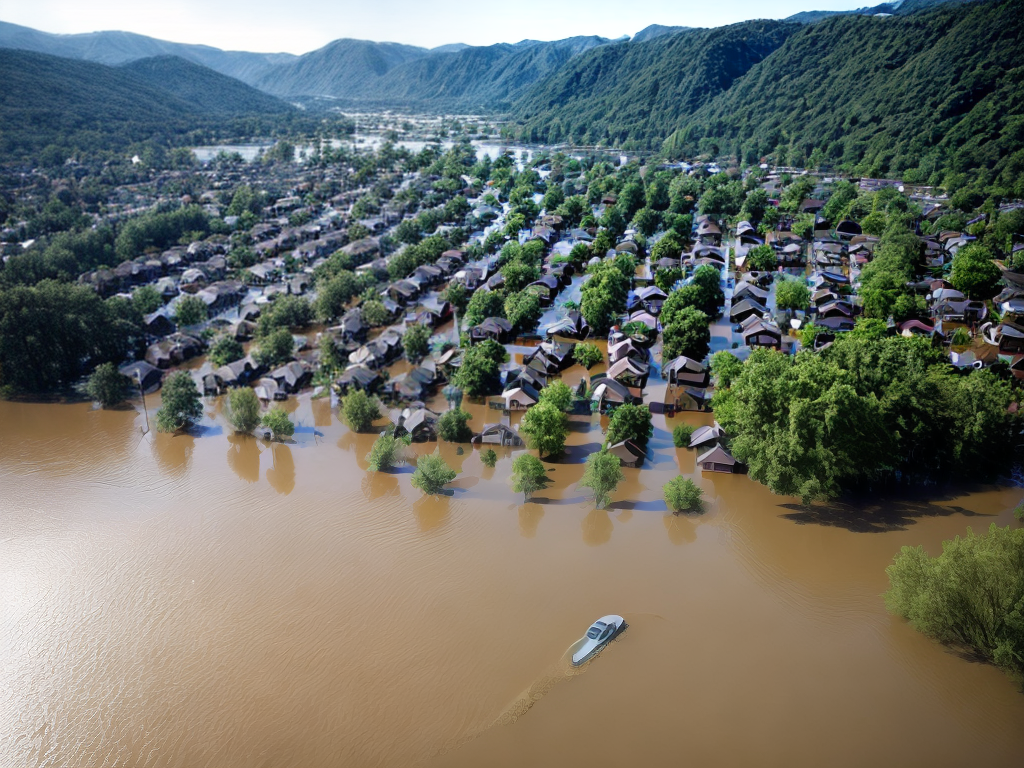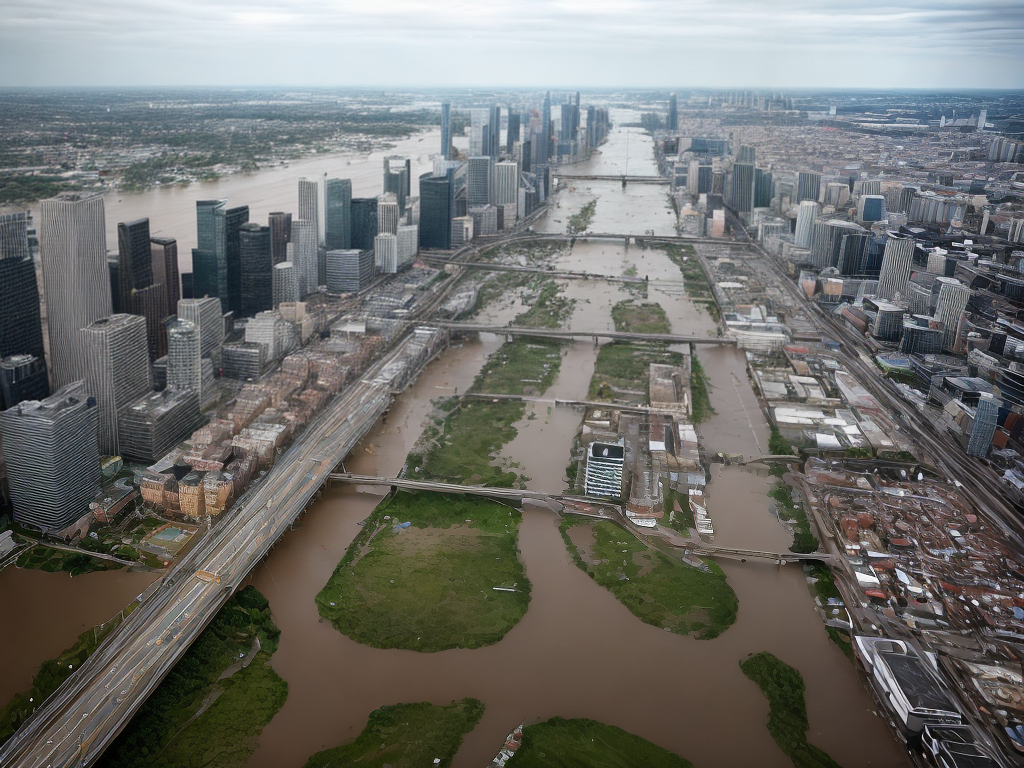By some stroke of luck, we may find ourselves living in areas prone to flooding. It’s a reality we can’t ignore, but we don’t have to be helpless in the face of it either. With the right preparations, we can safeguard our homes and minimize the damage caused by floods. In this article, we’ll explore the top 10 tips that will help us fortify our homes against the destructive forces of water. So, without further ado, let’s dive into these essential strategies that could potentially save us from a watery disaster.
Key Takeaways
- Assess flood risk by considering location and historical flood data
- Take flood preparedness measures such as elevation, installing flood-resistant doors and windows, and implementing proper drainage systems
- Establish communication channels and identify evacuation routes
- Install flood barriers, elevate essential utilities, and use waterproofing techniques for basements to minimize damage
Assess Flood Risk
How can we accurately assess the flood risk in our home? When it comes to protecting our homes from potential floods, it is crucial to have a clear understanding of the flood risk associated with our properties. This is where flood risk assessment plays a pivotal role. By conducting a thorough flood risk assessment, we can gain valuable insights into the likelihood and potential impacts of floods on our homes.
To assess the flood risk, we must consider various factors. One of the key aspects is the location of our home. Is it situated in a flood-prone area or near a river? Additionally, we need to examine historical flood data and analyze the frequency and severity of past flood events in our region. This information can help us gauge the level of risk we face.
Furthermore, it is essential to assess the vulnerability of our home to flooding. Are there any weak points in our property’s defense against floods? Identifying areas such as basements, windows, or doors that are susceptible to water entry is crucial. Additionally, analyzing the elevation of our property in relation to nearby water sources can provide valuable insights into the potential severity of flooding.
Once we have accurately assessed the flood risk, we can take appropriate flood preparedness measures. These measures may include elevating our home, installing flood-resistant doors and windows, and implementing proper drainage systems. It is also crucial to create an emergency plan and assemble an emergency kit containing essential supplies.
Develop an Emergency Plan
Let’s start by developing an emergency plan that includes identifying evacuation routes and establishing communication channels. Knowing the best routes to safety and having a plan in place to keep in touch with loved ones and emergency services are crucial during a flood. By taking these steps, we can ensure that we are prepared and ready to act quickly in the event of a flood.
Evacuation Routes
We must develop an emergency plan that includes identifying evacuation routes. When it comes to preparing for a flood, it’s crucial to have a well-thought-out plan that ensures the safety of ourselves and our loved ones. To do this, we need to research and map out the best evacuation routes available in our area. Utilizing technology and innovative mapping tools can greatly assist in identifying the safest and quickest paths to emergency shelters. It’s important to stay informed about local emergency services and any updates regarding evacuation routes. By being proactive and planning, we can ensure a smoother evacuation process and minimize potential risks during a flood emergency. Remember, innovation and preparedness go hand in hand when it comes to protecting ourselves and our homes.
Communication Channels
To develop an emergency plan, it is essential to establish effective communication channels. In today’s technologically advanced world, there are various innovative communication methods that can be utilized during a flood emergency. One such method is through the use of mobile phones and text messages, which allow for quick and instant communication between individuals and authorities. Additionally, social media platforms can serve as valuable tools for spreading emergency alerts and updates to a wide audience. It is also important to have a designated emergency contact person who can relay information to family members and friends. In some cases, specialized emergency alert systems such as sirens or community notification systems can be implemented to ensure everyone receives critical information promptly. By utilizing these communication channels, individuals can stay informed and take necessary actions during a flood emergency.
Install Flood Barriers
Installing flood barriers is an effective measure to protect your home from potential water damage during a flood. Not only can flood barriers prevent water from entering your property, but they can also minimize the need for extensive repairs and costly renovations. Here are four important points to consider when installing flood barriers:
- Choose the right type: There are various flood barrier options available, such as removable barriers, inflatable barriers, and permanent barriers. Research and select the type that best suits your needs and budget.
- Professional installation: While some flood barriers can be installed by homeowners, it is recommended to hire professionals for a seamless and secure installation. They have the expertise to ensure that the barriers are properly fitted and provide maximum protection.
- Regular maintenance: Once the flood barriers are installed, regular maintenance is crucial to ensure their effectiveness. Regularly inspect the barriers for any signs of damage or wear and tear, and promptly address any issues. This may involve cleaning, resealing, or replacing certain components.
- Stay updated with technology: As technology advances, so do flood barrier systems. Consider innovative options that incorporate smart technology, such as sensors that detect rising water levels and automatically deploy the barriers. These advanced features can provide an added layer of protection and peace of mind.
Elevate Essential Utilities
Let’s talk about the importance of elevating essential utilities in our homes to prepare for a flood. One key point is to raise electrical outlets to prevent water damage and reduce the risk of electrical hazards. Additionally, it’s crucial to elevate HVAC systems to protect them from potential floodwaters, ensuring they continue to function properly after the flood.
Raise Electrical Outlets
We can elevate essential utilities, such as electrical outlets, to minimize the risk of damage during a flood. By taking proactive measures, we can ensure the safety of our electrical systems and reduce the potential for costly repairs. Here are four innovative ways to raise electrical outlets and enhance electrical safety:
- Install raised electrical outlets: Elevate outlets above the expected flood level to prevent water from reaching them.
- Use waterproof outlet covers: These covers provide an extra layer of protection against water intrusion.
- Utilize weatherproof electrical boxes: These boxes are designed to withstand exposure to water and moisture.
- Consider relocating outlets to higher areas: If your home is prone to flooding, consider moving outlets to higher positions on the wall or even installing them on the ceiling.
Elevate HVAC Systems
To further safeguard our homes against flooding, another essential utility that should be elevated is the HVAC system. Elevating the HVAC system can help prevent damage to the unit and ensure its functionality during and after a flood. By raising the system above potential flood levels, we can avoid costly repairs and the need for replacement. Additionally, incorporating flood-resistant construction methods can further protect the HVAC system from potential water damage. This can include installing flood-resistant materials and sealing any gaps or openings that could allow water to enter the unit. Elevating plumbing and electrical systems is crucial, but it is equally important to prioritize the elevation of the HVAC system to maintain a comfortable and safe living environment, even in the face of a flood.
Waterproof Your Basement
Waterproofing your basement is essential to protect your home from potential flood damage. Flooding can cause significant harm to your property, leading to costly repairs and the loss of valuable belongings. By implementing effective waterproofing techniques, you can minimize the risk of basement flooding and ensure the safety of your home. Here are four innovative ways to waterproof your basement:
- Exterior Waterproofing: This technique involves applying a waterproof membrane to the exterior walls of your basement. It creates a barrier that prevents water from seeping into the foundation. This method is particularly effective in areas with high groundwater levels.
- Interior Waterproofing: Interior waterproofing techniques focus on managing water that has already entered the basement. One option is installing a drainage system, such as a French drain, that collects water and directs it away from the foundation. Additionally, applying waterproof coatings to the interior walls can provide an extra layer of protection.
- Sump Pump Installation: A sump pump is a device that removes water from your basement. It works by collecting water in a pit and then pumping it out of the house. Installing a sump pump can greatly reduce the risk of basement flooding and water damage.
- Window Well Covers: Window wells are common entry points for water during floods. Installing window well covers can prevent water from entering through these openings. These covers are made from durable materials and can be easily removed for emergency exits.
Secure Outdoor Items
Now let’s talk about securing outdoor items to prevent them from becoming hazards during a flood. We need to make sure that our outdoor furniture is properly anchored so it doesn’t get swept away by the rushing water. Additionally, it’s important to secure any loose objects like garden tools or toys that could potentially cause damage or be carried away. Lastly, we should take steps to protect our outdoor equipment, such as grills and lawnmowers, by moving them to higher ground or securing them in a safe location.
Anchoring Outdoor Furniture
We can prevent outdoor furniture from becoming hazardous during a flood by securely anchoring it. Here are four innovative ways to ensure your patio furniture and garden decor stay put:
- Use heavy-duty straps or bungee cords to secure your furniture to nearby sturdy structures, such as trees or posts. This will prevent them from being swept away by strong floodwaters.
- Consider investing in anchoring kits specifically designed for outdoor furniture. These kits often include ground anchors and cables that can be attached to your furniture, keeping it firmly in place.
- If your furniture is lightweight or easily movable, bring it indoors before a flood is expected. This will eliminate the need for anchoring and protect your furniture from potential damage.
- For garden decor, such as statues or pots, secure them to the ground using stakes or anchors. This will prevent them from being swept away or causing damage during the flood.
Securing Loose Objects
Securing outdoor items is essential to prevent them from becoming dangerous projectiles during a flood. To ensure the safety of your home and surrounding areas, consider anchoring patio furniture and securing garden equipment. Innovative solutions can be implemented to effectively address this issue. One option is to use heavy-duty straps or cables to fasten your outdoor furniture to a stable structure, such as a deck or patio. Another idea is to install ground anchors or stakes to secure garden equipment, such as lawnmowers or gardening tools, firmly into the ground. These measures will help prevent these items from being swept away or causing damage during a flood. By taking proactive steps to secure loose objects, you can minimize potential hazards and protect your home and community.
Protecting Outdoor Equipment
To ensure the safety of our home and surrounding areas during a flood, it is crucial to take steps to protect outdoor equipment and secure items that could become dangerous projectiles. Here are four innovative tips to help you safeguard your outdoor belongings:
- Anchoring sheds: Use heavy-duty straps or ground anchors to secure sheds and other outdoor structures. This will prevent them from being swept away or causing damage during a flood.
- Protecting gardening tools: Store your gardening tools in a waterproof container or elevate them on shelves. This will prevent them from rusting or being carried away by floodwaters.
- Secure outdoor furniture: Tie down or move outdoor furniture indoors to prevent it from being blown away or causing damage to your property or neighboring areas.
- Cover and protect outdoor equipment: Use tarps or waterproof covers to shield outdoor equipment like grills, lawnmowers, and bicycles from floodwaters. Additionally, consider moving them to higher ground to minimize the risk of damage.
Create a Home Inventory
Using a comprehensive home inventory is essential for preparedness in the event of a flood. It’s important to create a home inventory to secure your important belongings and ensure that you have a record of everything you own. A home inventory is a detailed list of all the items in your home, along with their estimated value. This inventory can be created using innovative digital tools that make the process quick and efficient.
When creating a home inventory, start by going through each room in your house and documenting all the items. Take clear and detailed photographs of each item, along with any relevant receipts or documentation. It’s also a good idea to include a description of each item, including its make, model, and any other identifying information.
To make the process even easier, consider using home inventory apps or software that allow you to easily catalog and organize your belongings. These tools often come with features like barcode scanning, which can automatically populate item details for you. They also provide cloud storage options, ensuring that your inventory is securely stored and accessible even if your physical belongings are damaged in a flood.
Once you have created your home inventory, be sure to regularly update it as you acquire new items or get rid of old ones. It’s also a good idea to store a copy of your inventory in a safe and secure location, such as a waterproof and fireproof safe or an encrypted cloud storage service.
Purchase Flood Insurance
After creating a comprehensive home inventory, the next crucial step in preparing for a flood is to ensure that you have adequate flood insurance coverage. Floods can cause extensive damage to your home, and without proper insurance, you may be left to bear the financial burden on your own. Here are four reasons why purchasing flood insurance is essential:
- Protection for your home: Flood insurance provides coverage for damage caused by flooding, whether it’s from heavy rains, storm surges, or overflowing rivers. It can help you repair or rebuild your home, ensuring that you can recover quickly after a flood.
- Peace of mind: Knowing that you have flood insurance coverage can give you peace of mind during times of heavy rainfall or severe weather conditions. You can rest easy knowing that you have financial protection in case of a flood.
- Financial security: Flood damage can be extremely costly to repair. Having flood insurance coverage can protect you from the financial burden of repairing or replacing damaged property, furniture, and other belongings.
- Affordable premiums: Contrary to popular belief, flood insurance premiums can be quite affordable, especially when compared to the potential cost of flood damage. Additionally, some areas may qualify for lower-cost policies through the National Flood Insurance Program (NFIP).
Keep Important Documents Safe
Let’s talk about how to keep our important documents safe during a flood. One option is to invest in waterproof storage containers or bags that can protect our documents from water damage. Additionally, we should consider creating digital backups of our important documents and storing them securely in the cloud or on external hard drives.
Waterproof Storage Options
To ensure the safety of your important documents during a flood, consider utilizing waterproof storage options. Having a reliable waterproof storage solution is crucial in protecting your documents from water damage. Here are some innovative options to keep your documents safe:
- Waterproof bags: These durable bags are designed to keep your documents dry even when submerged in water. They provide an extra layer of protection against moisture and are easy to carry.
- Moisture-proof containers: These containers are specifically designed to keep moisture out, ensuring your documents stay dry. They come in various sizes and are a great option for storing important papers.
- Waterproof file boxes: These boxes are designed to withstand water damage and keep your documents organized. They offer a secure and portable solution for storing and transporting important files.
- Digital storage: Consider scanning your documents and storing them digitally in a secure cloud storage service. This ensures that even if the physical copies are damaged, you still have access to your important documents.
Digital Document Backup
When it comes to keeping important documents safe during a flood, one effective solution is to create a digital backup of your files. With the advancement of technology, digital document storage has become a popular and convenient option for many homeowners. By utilizing cloud backup services, you can ensure that your important documents are securely stored and easily accessible from anywhere with an internet connection. Cloud backup eliminates the risk of physical damage to your documents and provides an extra layer of protection against loss or theft. To help you understand the benefits of digital document backup, take a look at the table below:
| Benefits of Digital Document Backup |
|---|
| 1. Protection against physical damage |
| 2. Secure storage |
| 3. Accessible from anywhere |
| 4. Protection against loss or theft |
Prepare a Flood Emergency Kit
Creating a comprehensive flood emergency kit is essential for ensuring the safety and well-being of our household during a flood. When it comes to emergency preparedness, having the right flood emergency supplies can make a significant difference in how we handle a crisis. Here are four innovative items to include in our flood emergency kit:
- Waterproof Portable Charger: Power outages are common during floods, and having a reliable source of power is crucial. A waterproof portable charger can keep our electronic devices charged, allowing us to stay connected and access important information during an emergency.
- Emergency Water Filter: Clean drinking water may become scarce during a flood, so having an emergency water filter can ensure that we have access to safe drinking water. Look for a compact and efficient water filter that can remove contaminants and bacteria from any water source.
- Solar-powered Emergency Radio: Communication is vital in any emergency. A solar-powered emergency radio can provide us with important updates, weather forecasts, and emergency announcements. Opt for a radio that can be charged using solar energy or a hand crank.
- Dry Bags: Protecting our belongings during a flood is essential. Dry bags are waterproof and can keep our important documents, electronics, and other valuables safe and dry. Choose dry bags of different sizes to accommodate various items.
Know Evacuation Routes
Knowing the evacuation routes is essential for ensuring our safety and preparedness in the event of a flood. Having a well-defined emergency plan in place is crucial, and this includes knowing the best routes to take when we need to evacuate our homes. In this age of innovation, we have access to advanced technology that can help us stay informed about the latest evacuation routes and any potential changes in real time.
One of the most effective ways to stay updated on evacuation routes is through mobile apps and online platforms specifically designed for emergencies. These tools provide us with interactive maps that highlight the recommended routes and any alternative options available. By utilizing these resources, we can plan our evacuation route, taking into account factors such as traffic congestion, road closures, and the fastest way to reach a safe location.
Additionally, it is important to stay connected with local authorities and emergency management agencies, as they will provide the most accurate and up-to-date information regarding evacuation routes. Following their social media accounts, subscribing to their emergency notification systems, and having their contact information readily available will ensure that we are always informed about the safest routes in case of a flood.
Disconnect Electrical Appliances
To ensure our safety during a flood, we must disconnect all electrical appliances in our homes. Floodwaters can pose a serious threat to our electrical systems, and taking the necessary precautions will help prevent damage and potential hazards. Here are four reasons why disconnecting electrical appliances is crucial:
- Prevent electrical shock: Floodwaters can carry an electric current, making it extremely dangerous to come into contact with any live electrical appliances. By disconnecting them, we reduce the risk of electrical shock and protect ourselves and our loved ones.
- Minimize fire hazards: Floodwaters can damage electrical wiring, leading to short circuits and potential fires. By disconnecting appliances, we eliminate the risk of electrical sparks igniting flammable materials, reducing the chances of a devastating fire.
- Avoid damage to appliances: Floodwaters can cause irreparable damage to electrical appliances. By disconnecting them, we prevent water from reaching the internal components, increasing the chances of salvaging our valuable appliances after the floodwaters recede.
- Simplify the cleanup process: Disconnecting electrical appliances before a flood makes the cleanup process easier and safer. It allows us to focus on removing water and cleaning our homes without the added worry of potential electrical hazards.
In addition to disconnecting electrical appliances, we should also secure outdoor items that could become projectiles during a flood. These items, such as patio furniture, garden tools, and toys, can cause further damage to our homes or pose a danger to others if they are swept away by strong floodwaters.
Clear Gutters and Drains
We can ensure proper water drainage during a flood by clearing our gutters and drains. Clearing these areas is essential in preventing water from backing up and causing damage to our homes. When heavy rainfall occurs, our gutters and drains must be free from any obstructions that may impede the flow of water. By taking proactive measures to clear gutters and drains, we can prevent water from pooling around our homes and potentially causing structural damage.
To clear gutters, start by removing any debris such as leaves, twigs, and dirt. A leaf blower or a pressure washer can be useful tools for this task. Make sure to also check for any loose or damaged gutter sections that may need to be repaired or replaced. It is important to keep gutters clean and free-flowing to avoid water overflowing and damaging the roof or foundation of our homes.
Similarly, drains should also be cleared regularly to ensure proper water drainage. Use a drain snake or a high-pressure water jet to remove any clogs or blockages. Pay close attention to areas such as downspouts, storm drains, and outdoor drainage systems. By keeping drains clear, we can prevent water from accumulating and causing flooding in our yards or basements.
Innovative solutions such as gutter guards and drain covers can also be considered to help keep gutters and drains clear. These products can help prevent debris from entering and clogging the system, reducing the maintenance needed and ensuring efficient water drainage during a flood.
Install a Sump Pump
After ensuring proper water drainage by clearing gutters and drains, the next step in preparing your home for a flood is to install a sump pump. A sump pump is a device that helps prevent water damage by removing excess water that accumulates in your basement or crawl space. Here are four reasons why sump pump installation is essential:
- Protection against flooding: A sump pump is your first line of defense against flooding. It automatically detects water levels and pumps out any excess water, keeping your basement dry and preventing costly damage.
- Prevents mold and mildew: Excessive moisture in your home can lead to the growth of mold and mildew, which can be harmful to your health. By removing water from the foundation, a sump pump helps maintain a dry environment, reducing the risk of mold and mildew growth.
- Preserve the structural integrity of your home: Flooding can weaken the foundation of your home, leading to structural damage. By promptly removing water, a sump pump helps prevent foundation cracks, shifting, and other structural issues, ensuring the long-term stability of your home.
- Increases the value of your property: Installing a sump pump can significantly increase the value of your home. Potential buyers view it as a valuable investment, knowing that it provides added protection against flooding and water damage.
Consider Professional Home Inspection
Hiring a professional home inspector is a crucial step in ensuring the safety and structural integrity of your property. When it comes to preparing your home for a flood, a professional inspection can provide valuable insights and help you make informed decisions. With their expertise and specialized tools, home inspectors can assess your property’s vulnerability to flooding and identify potential risks.
A professional inspection goes beyond a basic visual assessment. It involves a comprehensive evaluation of your home’s foundation, drainage system, and other critical components. During the inspection, the inspector will thoroughly examine your property, looking for signs of water damage, structural weaknesses, and potential entry points for floodwater. They will also assess the effectiveness of your existing flood prevention measures, such as the installation of a sump pump.
One of the key benefits of a professional inspection is the flood risk assessment. The inspector will analyze various factors, including your property’s location, elevation, and proximity to water sources, to determine the likelihood of flooding. They will also consider the impact of nearby bodies of water, such as rivers or lakes, and the local weather patterns. Based on their findings, they can provide recommendations on how to mitigate the risks and protect your home from potential flood damage.
Innovative technologies and techniques are constantly evolving in the field of home inspections. Professional inspectors stay up-to-date with the latest advancements, ensuring that you receive the most accurate and reliable assessment of your property. By investing in a professional home inspection, you can gain peace of mind knowing that your home is well-prepared for any potential flood event.

